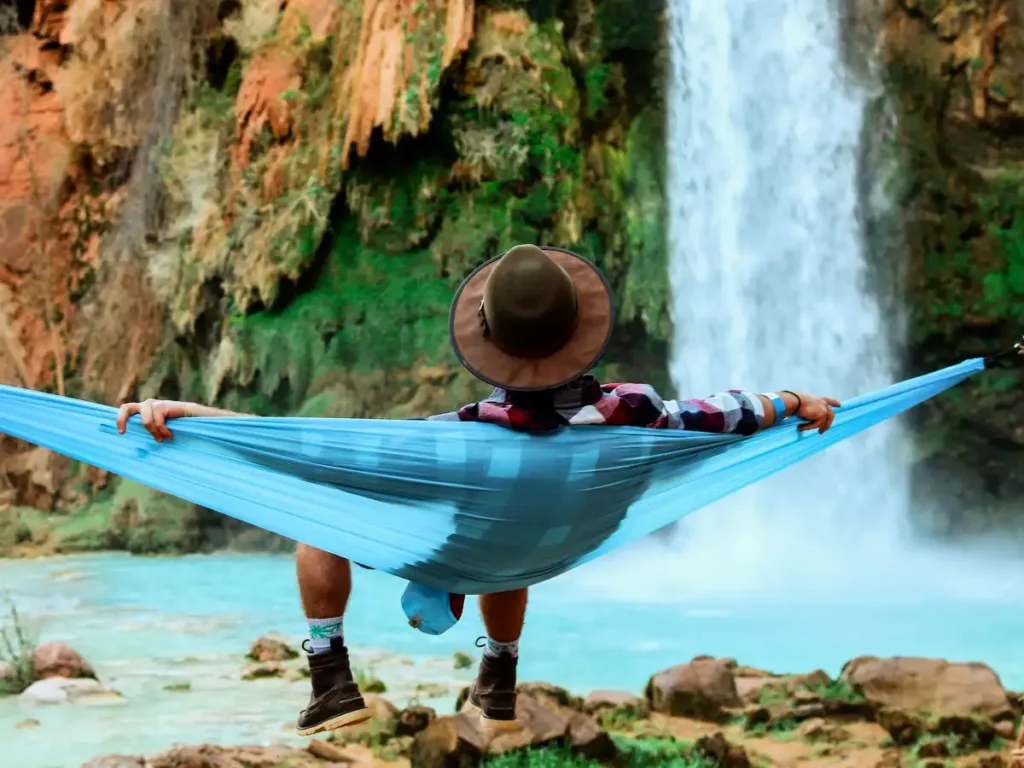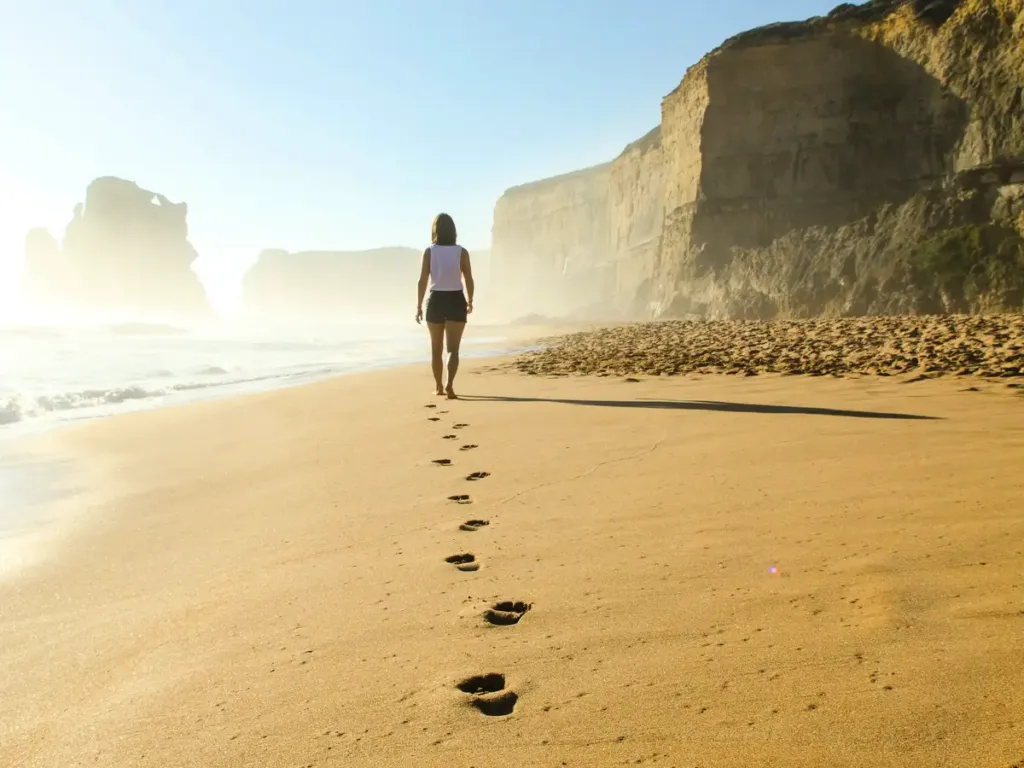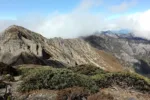5 essential tips on How to Recover quickly After a Hike
This post may contain affiliate links. This means that we may receive a small commission from purchases through those links. Read more in our affiliate disclosure.
Out there on the trail, your body is your best companion. It’s there with you as you ascend the steepest hills and navigate the rockiest paths. But the journey doesn’t end when you step off the trail – it continues even as you unlace your hiking boots and pack them away.
The post-hike period is a crucial chapter where your body goes through a fascinating process of recovery and rejuvenation. But what exactly happens to your body after a hike, and how can you best aid it in this recovery journey? Let’s find out!
After a strenuous hike, your body goes through a process of recovery where it replenishes energy stores, repairs tissue, and adapts to the stress of physical activity. You might feel sleepy due to the high energy expenditure and the increased production of adenosine, a sleep-inducing molecule. Boosting your energy levels post-hike involves proper rehydration, nutrient-rich meals, and rest.
While stretching can be beneficial, it should be gentle and focused on relaxation. The choice between a hot or cold post-hike shower depends on your personal preference and what your body needs – heat for relaxation and circulation or cold for reducing inflammation. Eating a balanced mix of proteins, carbohydrates, and healthy fats after a hike helps replenish your energy stores and provide your body with the nutrients it needs for repair. Lastly, rest is crucial. The amount of rest needed depends on the intensity of your hike, but rest can be active and could even include light walks. By understanding and respecting your body’s needs after a hike, you’ll be ready for your next adventure in no time!

- Introduction
- What Happens to Your Body After a Long Hike?
- Why Am I So Sleepy After a Hike?
- Why Am I So Tired the Day After a Hike?
- Do You Retain Water After a Long Hike?
- Why do I Weigh More After a Hike?
- Boosting Your Energy After a Hike
- Should You Stretch After a Long Hike?
- Post-Hike Shower: Hot or Cold?
- Nutrition for Recovery
- Rest After a Hike
- Do You Really Need to Rest After a Hike?
- How Long Should You Rest After a Long Hike?
- Get Plenty of Sleep
- Do You Need Rest Days From Walking?
- Conclusion
What Happens to Your Body After a Long Hike?
Hiking isn’t just a simple walk in the park. It’s a complex, full-body activity that challenges our physical capacities. Your heart, lungs, muscles, and even your brain are all fully engaged during a hike.
Let’s look at these processes in more depth:
Why Am I So Sleepy After a Hike?
Feeling sleepy after a hike is essentially your body signaling it’s time to rest and restore. However, it’s more intricate than just burning through your energy reserves. To understand this better, let’s first explore how our bodies function during a hike.
When hiking, you’re pushing your body to work harder than it typically does. You’re engaging a range of muscles throughout your body, but most notably in your legs, hips, and core. These muscles require energy to function, which comes in the form of ATP (adenosine triphosphate).
The production of ATP uses glycogen stored in your muscles, and this process also requires oxygen. Therefore, your cardiovascular and respiratory systems play a crucial role, working together to supply that oxygen. The need for oxygen and energy production intensifies during a hike, which is why your heart rate increases and you breathe more deeply.
However, this high-demand ATP production process has a side effect: the accumulation of adenosine in the brain. Adenosine is a byproduct of ATP metabolism, and it has a particular property – it promotes sleep and relaxation. As you’re hiking and burning through ATP, the adenosine level in your brain rises. It acts as a signal telling your brain it’s time to slow down and sleep. This is part of the body’s natural checks and balances, preventing overexertion and ensuring you get the rest you need to recover.
Additionally, your brain is more active during a hike. You’re taking in new information, navigating your surroundings, and possibly managing the stress of difficult terrain or challenging weather conditions. This mental activity consumes energy as well, contributing to your post-hike fatigue.
Finally, the great outdoors, with its combination of fresh air, natural light, and serene landscapes, has an innate relaxing effect. Sunlight, specifically, influences the production of melatonin, a hormone that regulates sleep. Being out in the sun during your hike can therefore make you feel sleepy once you’re back indoors.
So, between the adenosine build-up from ATP production, increased mental activity, and the influence of natural light, it’s no wonder you feel a pull towards a long, restful sleep after a good hike.
Why Am I So Tired the Day After a Hike?
The feeling of fatigue the day after a hike is tied to the depletion of your body’s energy stores and the process of recovery that is just beginning.
When you’re hiking, your body uses the glycogen stored in your muscles for energy. Once the glycogen is used up, your body starts to break down fats for fuel. This process is slower and less efficient than using glycogen, which is why you might feel depleted and exhausted after a long hike.
On top of this, hiking can cause micro-tears in your muscle fibers, especially if you’re tackling difficult terrains or carrying a heavy backpack. This is a completely normal part of the process of exercise and adaptation, but it can contribute to muscle soreness and fatigue.
Your body is now working to repair these tiny muscle injuries. In response to the damage, it triggers an inflammatory response, sending nutrients and immune cells to the affected area to start the repair process. This results in inflammation, which can cause stiffness, pain, and fatigue.
Do You Retain Water After a Long Hike?
It’s possible to experience water retention after a hike. This ties back to the inflammation caused by the micro-damage to your muscle fibers.
When your body senses these micro-tears, it triggers an inflammatory response. Part of this response involves increasing the flow of blood, and hence water, to the affected areas. This is your body’s way of speeding up the repair process by delivering essential nutrients and immune cells to the damaged areas. As a result, you might notice a bit of swelling or puffiness in your lower body, particularly if you’ve been on a long or strenuous hike.
Additionally, hiking and any form of exercise cause you to sweat, leading to water loss. In response, your body might try to hold onto water to prevent dehydration, contributing to water retention.
Why do I Weigh More After a Hike?
Gaining weight after a hike might seem counterintuitive, but it’s actually a common occurrence, and it’s linked to the points we’ve already discussed.
Firstly, the water retention caused by inflammation and a defensive response to dehydration can increase your weight temporarily. Water is heavy; even a small increase in body water can lead to a noticeable change on the scale.
Secondly, hiking is an excellent way to build muscle, especially in your lower body. Muscle tissue is denser and therefore weighs more than fat tissue. As your body adapts to regular hiking, you might see an increase in muscle mass, which could lead to a weight increase.
These changes are completely normal and are part of your body’s amazing response to physical exertion. With time and consistent hiking, your body will adapt, and your weight should stabilize. The number on the scale is just a number. What’s important is how you feel.
Boosting Your Energy After a Hike
Reenergizing after a hike is just as important as the physical preparation you do before hitting the trail. Your body is in recovery mode, so you need to replenish the energy you’ve used. Let’s explore how you can effectively regain your energy after a hike.
How Do I Get Energy After Hiking?
The secret to bouncing back quickly lies in three main things: hydration, nutrition, and rest.
Hydration: Rehydrating is essential after a hike. You lose fluids through sweat, and this can cause dehydration if not replaced. Dehydration often manifests as fatigue, so ensure you drink plenty of water after your hike. If it was a particularly strenuous or long hike, consider a sports drink that contains electrolytes to replace the minerals you’ve lost.
Nutrition: After hiking, your body needs to replenish its glycogen stores. This means consuming carbohydrates to provide the necessary glucose. But it’s not just about carbs. Protein is essential for muscle repair, so aim for a balanced meal or snack that includes both carbohydrates and protein. For a quick energy boost, fruits like bananas or oranges can be ideal due to their natural sugars and essential nutrients.
Rest: Finally, sleep is where the magic happens. Your body repairs and regenerates during sleep. Adequate rest not only helps you feel more energized but also aids in muscle recovery. Listen to your body. If you feel the need for a nap after a hike, it’s probably because you need it.
Should You Stretch After a Long Hike?
Absolutely, stretching after a long hike is beneficial. It’s a crucial part of your cool-down routine and can help kickstart the recovery process.
When you hike, your muscles work hard and can tighten up as a result. Stretching after your hike can help to lengthen these muscles again, improving flexibility and reducing the risk of muscle stiffness and soreness.
But it’s not just about the muscles. Stretching also helps to increase circulation, allowing for a more efficient nutrient supply to the muscles, which aids in recovery.
Focus on the muscles that have been working the hardest. These will typically be your quads, hamstrings, hip flexors, and calf muscles.
While stretching, maintain a steady breath, hold each stretch for about 30 seconds, and avoid any bouncing movements to minimize the risk of injury. Stretching should never cause pain. If it does, you’re pushing too hard.

Post-Hike Shower: Hot or Cold?
The answer to this question isn’t as straightforward as it might seem, and depends heavily on your personal preference and the specifics of your hike.
A hot shower can be a great way to relax your muscles after a long hike. The warmth helps to increase blood circulation, speeding up the delivery of nutrients to your muscles for recovery, and can provide a soothing effect, especially if you’re feeling sore or stiff.
On the other hand, a cold shower or an ice bath can be beneficial in reducing inflammation and muscle soreness. It’s a technique often used by athletes to help speed up recovery. The cold helps to constrict blood vessels and decrease metabolic activity, which reduces swelling and tissue breakdown.
Alternating between hot and cold showers – known as contrast water therapy – could also be a great idea. The idea here is that the hot water dilates blood vessels and the cold water constricts them, creating a pump-like action that flushes out waste products from your muscles.
Personally, I find that a hot shower right after the hike helps me relax and sleep well, and cold or alternating showers on the following days speed up recovery.
Nutrition for Recovery
Effective recovery isn’t just about rest and relaxation – it’s also about fueling your body with the right nutrients to rebuild and repair.
What Should I Eat the Day After a Long Hike?
The day after a long hike, your goal should be to replenish your energy stores and provide your body with the nutrients it needs to repair your muscles and other tissues. This means consuming a balanced mix of proteins, carbohydrates, and healthy fats.
Proteins are the building blocks for muscle repair. Foods rich in high-quality protein include lean meats, dairy products, eggs, and plant-based sources like lentils, chickpeas, and quinoa.
Carbohydrates are crucial to restore the glycogen that your muscles used during your hike. Opt for whole grain options where possible, as they provide a sustained energy release. Examples include whole grain bread, brown rice, quinoa, and starchy vegetables like potatoes.
Healthy fats play a key role in reducing inflammation and provide a rich source of calories to help replenish energy stores. Avocados, nuts and seeds, olive oil, and fatty fish like salmon are excellent sources of healthy fats.

And let’s not forget about hydration. Keep drinking water, and consider drinks with electrolytes if you’ve had a particularly sweaty hike. This is especially important when you’re sore: The breakdown and recovery of your muscles produces waste products, and your kidneys have to work hard to dispose of those. Drinking enough water helps out your kidneys and keeps them healthy!
For the same reason, it is better to avoid pain-killing ointments to combat the soreness of muscles – the medicine is absorbed by your body and has to be handled by your kidneys, which are already busy. It’s safer to hold off on the creams and deal with your soreness in other ways.
Should I Eat More After a Hike?
The amount you need to eat after a hike depends on the length and intensity of the hike, as well as your own personal metabolic rate and fitness goals.
In general, if you’ve had a long, intense hike, you’ll likely need to eat more than usual to replenish your energy stores and provide the necessary nutrients for muscle repair. Remember, the goal is not just to replace the exact number of calories you burned on the hike, but to fuel your recovery process.
But, as always, listen to your body. If you’re feeling particularly hungry, eat. If not, it’s okay to eat less. The key is to focus on nutrient-dense foods that aid recovery, rather than just eating for the sake of replacing calories.
Rest After a Hike
Rest is not merely the absence of activity, but an active period where vital physiological processes occur to heal your body and restore energy levels. This is particularly relevant after a hiking adventure.

Do You Really Need to Rest After a Hike?
Absolutely, yes. Resting after a hike allows your body to recover and repair tissues that may have been stressed or damaged during the hike. It’s during rest that the body adapts to the stress of exercise, replenishes muscle glycogen, and reduces any accumulated fatigue. Ignoring rest and recovery could lead to overuse injuries and hinder your performance on future hikes.
How Long Should You Rest After a Long Hike?
The length of rest required depends on the length and intensity of your hike. As a general rule, for each hour of hiking, you should allow an hour of recovery time. But, recovery isn’t just about sitting on the couch. Active recovery, like a gentle walk or a leisurely bike ride, can help enhance blood flow, promoting nutrient delivery to your muscles.
You will feel when you’re ready to take on more strenuous exercise again by listening to your body. Once your soreness and excessive tiredness are gone, you’re good to go.
Get Plenty of Sleep
If there’s a magical ingredient for recovery, it’s a good, long sleep. Our body enters a state of hyper-recovery when we’re snoozing, and it’s during this time that some of the most important repair and replenishment processes take place.
During sleep, our body releases growth hormones which are critical for tissue repair and muscle growth. Simultaneously, it reduces the production of cortisol, a stress hormone that can impede recovery and contribute to prolonged feelings of fatigue.
Furthermore, sleep is essential for the neurological aspects of hiking. Sleep, particularly the REM phase, plays a key role in memory consolidation. This includes the motor learning that happens when you navigate new terrains or manage challenging parts of the trail.
Lastly, a good night’s sleep resets the adenosine buildup, combating the sleepiness you may have felt post-hike and leaving you refreshed for the next day.
It’s recommended to aim for at least 7 to 9 hours of sleep per night, though you might find that you need a bit more after a strenuous hike. So, give your body the rest it’s yearning for and let sleep work its restorative magic!
Do You Need Rest Days From Walking?
Even in the case of lower-intensity activities like walking, it’s important to strike a balance. While walking is gentler on the body than more strenuous forms of exercise, it’s still beneficial to allow time for recovery.
However, walking can also serve as an effective form of active recovery. Active recovery is a strategy that combines rest with light activity, like a leisurely stroll, to help enhance blood circulation, aiding nutrient delivery and waste removal from your muscles. This can be particularly beneficial the day following a more intense activity, like a strenuous hike.
The key lies in the intensity and duration of your walks. If you’re engaging in long, brisk walks daily, taking a rest day or switching to a shorter, more relaxed stroll can help your body recover. On the other hand, if your walks are generally light to moderate, you can likely continue to walk daily without the need for specific rest days.

Conclusion
Hiking is a rewarding adventure that not only immerses us in the beauty of the natural world, but also challenges our physical and mental endurance. The journey, however, doesn’t end when we step off the trail. The post-hike period is a crucial chapter where we must honor our bodies with proper recovery practices – rehydration, refueling, relaxation, and, importantly, rest.
By understanding and respecting our body’s needs after a hike, we can ensure we’re ready to tackle the next trail with gusto. After all, as much as we may love the journey, we must equally love and care for the vehicle that allows us to embark on these wonderful wilderness adventures – our body. The trails will always be there, ready to be explored. Make sure you are too!




